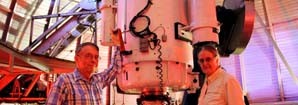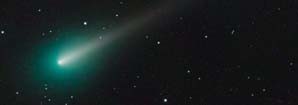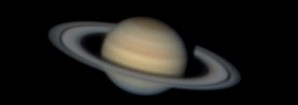Spotlight

Incredible technology: How to see an invisible black hole
Black holes are essentially invisible, but astronomers are developing technology to image the immediate surroundings of these enigmas like never before. Within a few years, experts say, scientists may have the first-ever picture of the environment around a black hole, and could even spot the theorized "shadow" of a black hole itself.

Government shutdown halts testing of instrument for James Webb Space Telescope
The testing of one of four instruments for a large-scale telescope was put on pause last week due to the federal government shutdown that began on Oct. 1.

Green light for ISON: Comet blazes in stunning shots
It's not at all clear whether Comet ISON will become "the comet of the century," as skywatchers hoped a year ago, but it's certainly become a beautiful sight for photographers with the right kind of telescope. Adam Block captured a stunner on Tuesday morning, just before sunrise, using the 0.8-meter Schulman Telescope at the University of Arizona's SkyCenter atop Mount Lemmon.

From My Arizona Sky to the Edge of the Universe
The 4th Annual My Arizona Lecture Presents Chris Impey
"From My Arizona Sky to the Edge of the Universe"
Friday, October 18, 2013
3:30 - 5:00 p.m.**
Aerospace & Mechanical Engineering Building, Room S202
**Reception to Follow

UA Machining and Welding Center Wins NASA Award
Welders and machinists at the University of Arizona's Machining and Welding Center have been recognized by NASA with an award for "extraordinary dedication and contributions" to the James Webb Space Telescope project.

Squinting At Saturn Through 17th Century Technology
(ISNS) -- A team of French researchers has shed light on an important moment of astronomical history by testing the old lenses used by astronomer Jean-Dominique Cassini when he observed a minuscule gap between two of Saturn's rings in 1675. Questions have lingered over whether it was possible to see this gap, which was later named the "Cassini Division," with the optics he had at his disposal.
Pages

For Public
Public events include our Monday Night Lecture Series, world-reknowned Astronomy Camp and Mt Lemmon Sky Center.

For Students
A good place to start if you want to become an undergrad major or grad student, or need to find our schedule of classes.

For Scientists
Find telescopes and instruments, telescope time applications, staff and mountain contacts, and faculty and staff scientific interests.




